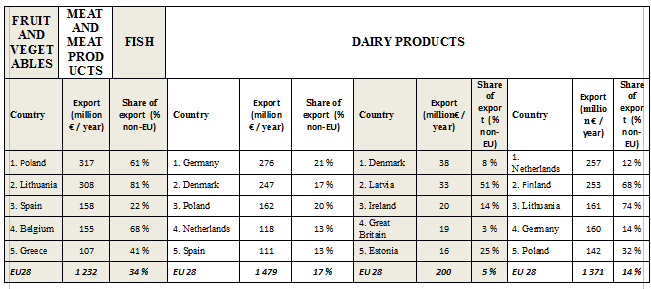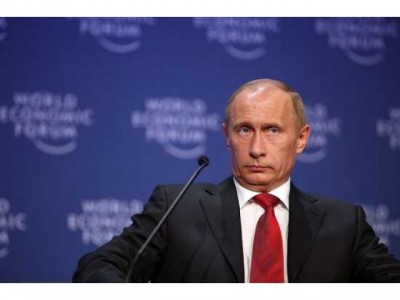The topic “Russia and Ukraine” is occupying the world media for nearly six months. Since July 2014, it has even escalated after imposing trade sanctions by Russia. The country prohibits imports of fruits, vegetables, meat and other food from the United States, European Union, Australia, Canada and Norway. Let’s ask: which countries of the EU will suffer under this ban most?
One could say the answer “who is the winner” is pretty clear: Russia. And it is true. The most negative impact is definitely going to hit Russian citizens themselves, because prohibiting of food imports dramatically lowers their utility, reduces economic activity, including job creation, and last but not least it cuts disposable income in their wallets. Missing supply will spill over into higher prices of banned goods. Penalties, however, affect many businesses across the world. Let’s have a look on a list of the EU largest exporters of food to the Russian Federation, according to various market segments.
Although the recent campaign enthusing for special state subsidies in the Czech Republic, Czech farmers and food producers are absent among the most important exporters to the Russian Federation. In the subsector “fruit and vegetables”, Poland is the largest exporter. The goods with the value 317 million EUR per year (61 % of fruit and vegetables exports from Poland outside the EU) are usually distributing from Poland to Russia. The sanctions prohibiting imports of meat and meat products to Russia have mainly affected German producers (with the value of goods 276 million EUR per year). Export of fish products will decrease especially in Denmark (38 million EUR per year). Considering dairy products imported to Russia, those are mainly exported from the Netherlands (value: 257 million EUR per year) and Finland (253 million EUR per year).
Overview of the five largest exporters to the Russian Federation in main segments of the food market is given in the table below. The last row notices how much food is exported from the EU to Russia in total, i.e. how much food is absent on the Russian market.
TABLE: TOP 5 EXPORTERS OF FOOD TO RUSSIA 
Notes: The table shows TOP5 exporters to the Russian Federation in a given market segment. The column “Export (million € / year)” represents an annual amount in which the goods are exported to the Russian Federation. The column “Share of export (% non-EU)” represents the relative proportion of the exports of the commodity to countries outside the EU. Source: Financial Times.




